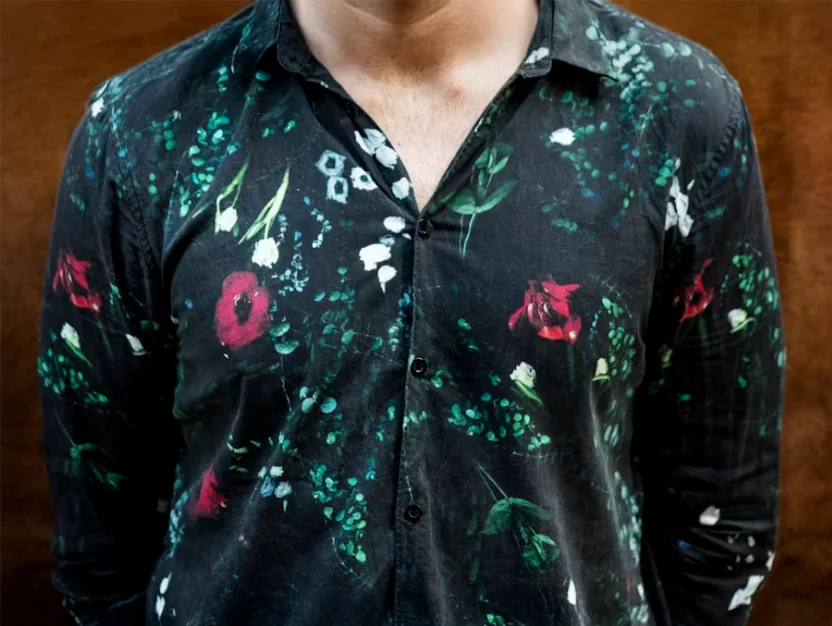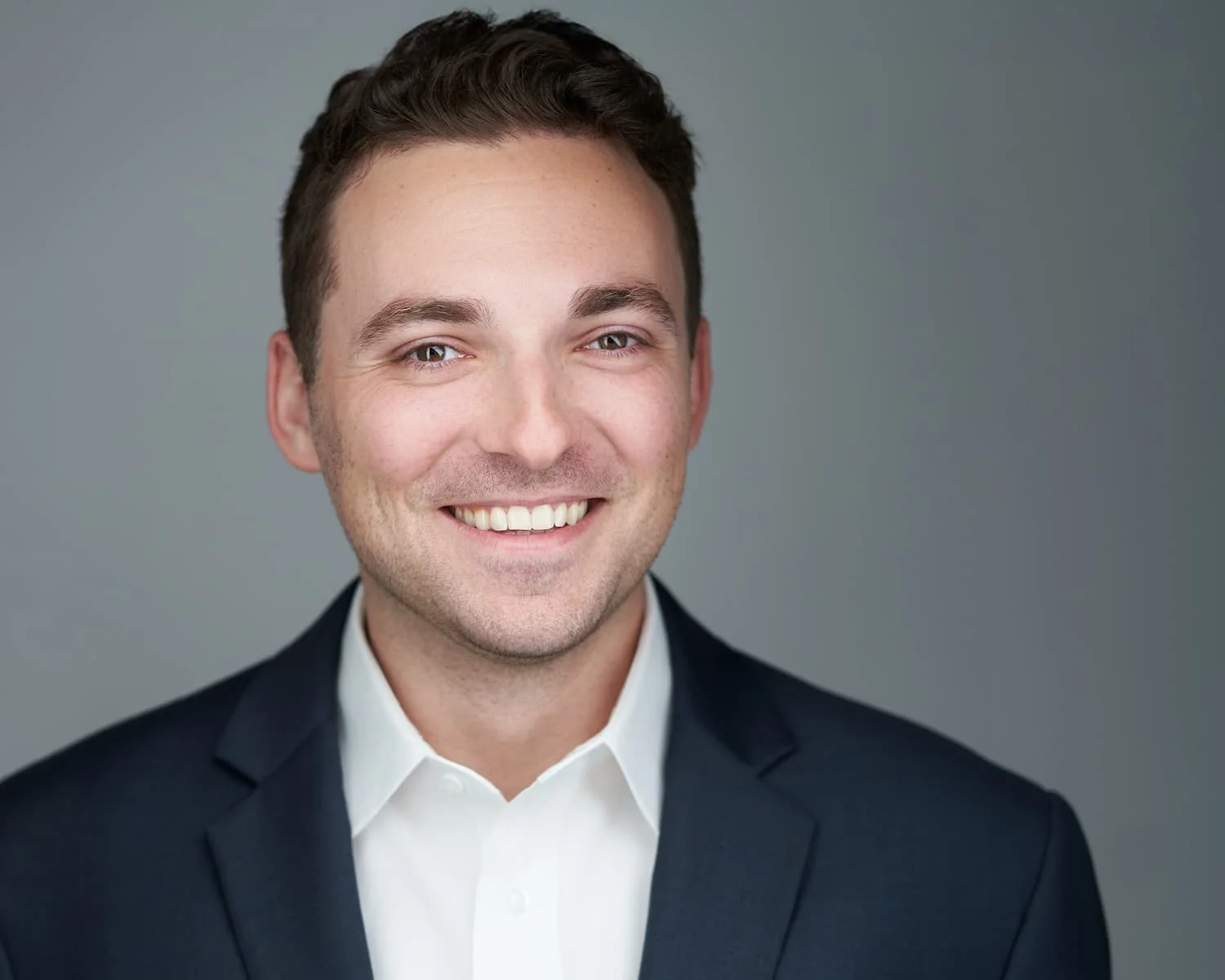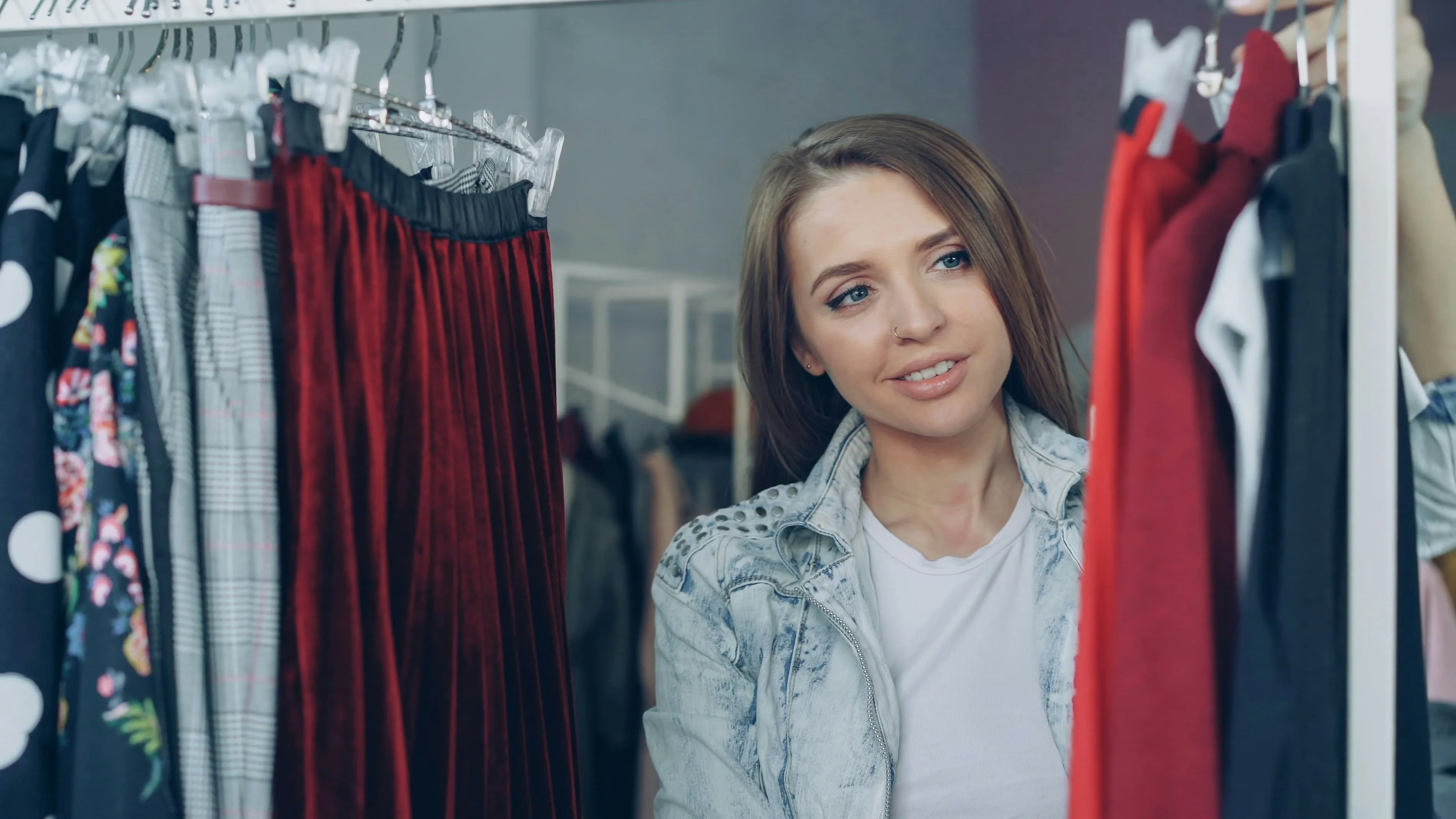Headshot Wardrobe Mistakes: What Not to Wear for Your Professional Photo
Avoid common wardrobe mistakes that can ruin your headshot. Philadelphia photographer shares what not to wear for professional photos that work year-round.
I get this question all the time and honestly, it is a great question to ask. But sometimes the more helpful question is actually what NOT to wear.
Over the years (thousands of sessions, really), I’ve seen certain wardrobe choices create problems that are completely avoidable. The frustrating part? Many of these mistakes aren’t obvious until you see your photos. By then, you’re either stuck with images you can’t use, or you’re scheduling a reshoot. Maybe you just cringe every time you see the photos.
Here’s the thing: your wardrobe can either support your headshot or completely distract from it. And since your face is what we’re trying to showcase here, anything pulling attention away from that is working against you.
Let me walk you through the most common wardrobe mistakes I see, so you can avoid them entirely.
The Big One: Heavy Patterns and Busy Designs
This is the wardrobe mistake that causes more problems than anything else.
Stripes, plaids (sometimes fine), houndstooth, geometric patterns, busy florals—these all compete with your face for attention. And in a headshot, your face should win every single time. When someone looks at your LinkedIn profile or company website, you want them thinking about you and your professional presence, not wondering where you bought that interesting shirt.
You may say, “But I wear this pattern all the time, it’s part of my style!” I get that. And if bold patterns are genuinely your everyday look, we can talk about how to make it work. But here’s what (typically) happens: patterns that look perfectly fine in person can become distracting or even create weird visual effects on camera. Thin stripes can create something called a moiré pattern—these strange wavy lines that show up in photos. Not what we’re going for.

The fix is simple: solid colors are your best friend for headshots.
Logos, Text, and Branding
Unless you’re specifically creating headshots for your company (and even then, there’s usually a better approach), skip the logo shirts.
Here’s why: your headshot gets used in a lot of different contexts. That company polo might be perfect today, but what happens when you change jobs? Or when you’re using that headshot for a speaking engagement that’s not affiliated with your company? Suddenly your photo feels dated or out of place.
The same goes for any clothing with visible text, brand names, or graphics. They pull focus and they date your photo. We want your headshot to work for you for the next couple of years, not just the next couple of months. If your only clothing option includes a small logo, talk to your photographer, chances are it can be cropped out or photoshopped out.
Colors That Create Problems
Not all colors photograph the same way, and some can actually work against you.
Extremely bright or neon colors tend to overpower the frame. Yes, they grab attention—but they grab it away from your face. Unless you’re in a particularly creative field where bold color choices are part of your brand (and you wear them consistently), it’s usually better to choose colors with a bit more subtlety. They can also negatively influence your skin tone as light bounces off of the top.
Colors that match your skin tone too closely can create a problem where you almost blend into your clothing. This is particularly true with beige, tan, and certain shades of brown or peach. You generally want some contrast between your face and your clothing, so there’s clear separation in the photo.
White can be tricky (not impossible, just tricky). Pure white can sometimes reflect light in ways that become distracting, and it can create harsh contrast depending on your background choice. Off-white, cream, or light gray tend to work better if you’re going for that lighter look/feel to the image.
What works well? Jewel tones (like emerald, sapphire, deep burgundy), rich earth tones, and solid mid-tone colors (typically) photograph beautifully and keep the focus where it belongs.

Seasonal and Trendy Looks
This is an important one that people don’t always think about.
Your headshot is going to be used all year round. That cozy turtleneck sweater might feel perfect for a fall session, but it’s going to look pretty warm when someone sees your photo in July. Same goes for sleeveless tops that scream summer—they can feel out of place when viewed in February.
The goal is to choose clothing that could work in any season. Long sleeves or three-quarter sleeves, structured tops, blazers, button-downs—these all work year-round without feeling too seasonally specific.
Trendy pieces are similar. That style that’s everywhere right now? It’ll date your photo faster than anything else. We want your headshot to feel current but timeless. Classic, well-fitted pieces always win here.
Fit Issues: Too Loose or Too Tight
Here’s something that surprises people: fit matters just as much as style, sometimes more.
Clothing that’s too baggy can make you look less polished and can create unflattering bunching or folds in the photo. Clothing that’s too tight can be uncomfortable (and trust me, discomfort shows up in your expression), and it can create pulling or tension in the fabric that draws attention.
We’re looking for something that fits well—not painted on, not swimming in fabric, just comfortably fitted in a way that looks professional and feels natural. Your photographer can do some positioning and help make clothes look like they fit better than they do but for the best results, make sure your tops fit well.
Accessories That Distract
I understand wanting to wear jewelry or accessories that complete your look. And there’s definitely a place for that—subtle accessories can absolutely enhance your overall appearance.
But giant statement necklaces, oversized earrings, or bold scarves can pull focus from your face. If we have a clean, simple top and then this massive piece of jewelry, the viewer’s eye goes straight to that instead of to you.
The test I (typically) suggest: if you wear a particular accessory every single day, go ahead and wear it. If it’s genuinely part of your everyday look, it belongs in your headshot. But if you’re putting it on specifically because you think it’ll look good in photos, take a moment to consider whether it might actually be competing for attention.
Small studs or simple earrings, a classic watch, a thin necklace—these tend to enhance without distracting. When it comes to portraits, less is more, usually.
Wrinkles and Condition
This one seems obvious, but I’ve got to mention it: bring your clothes wrinkle-free.
I’ve had people show up with outfits that have been sitting in their car all day, or pulled straight from the back of the closet, completely wrinkled. We can work with a lot of things, but heavy wrinkles are tough to fix and they make your photos look less polished. They can be reduced in photoshop but again, ideally that is not needed. Also many photographers keep a steamer or iron in their studio, so check with them if you think your clothes will have wrinkle problems.
Same goes for stains, pilling, or worn-out clothing. Your headshot is representing you at your professional best. Your clothing should match that energy.
Hang your outfits up the night before. Give them a quick steam or iron.
A Quick Word About Industry Differences
Now, I know what some of you are thinking: “But doesn’t this depend on my industry?”
Yes and no.
If you’re in corporate finance or law, you’re probably leaning toward suits, blazers, and button-downs. If you’re an actor, you might want something more casual that shows your personality. If you’re in a creative field, you might have more flexibility with color or style choices.
But here’s the truth: the core principles stay the same across all industries. Whether you’re a CEO or an actor preparing for auditions, you still want clothing that keeps focus on your face, doesn’t distract with patterns or logos, and will work for you year-round.
The difference is in how you interpret those principles, not whether they apply.
What TO Wear Instead
Okay, so we’ve covered a lot of “don’ts.” Let me give you some solid “dos” to work with.

Solid colors in jewel tones or rich mid-tones (typically) work beautifully. Think navy, forest green, burgundy (subtle), charcoal, deep purple, or rich earth tones.
Well-fitted clothing that’s comfortable and makes you feel confident. If you feel good in what you’re wearing, that shows up in your expression.
Classic styles that won’t feel dated in two years. A simple button-down, a structured blazer, a clean crewneck or v-neck—these are always safe choices.
And here’s my favorite tip: bring 3-4 outfit options to your session. This gives us flexibility, and we can look at each option together and choose what’s working best. Sometimes something looks great in your closet but doesn’t quite work on camera, and having backup options means we’re never stuck. For more preparation tips, check out my guide on how to prepare for your headshot session.
The Bottom Line
Your wardrobe shouldn’t be the star of your headshot—you should be.
Every choice we make in a headshot session is about keeping attention on your face and your expression/vibe. That’s where the connection happens, that’s where people get a sense of who you are, and that’s what makes someone want to reach out or learn more.
Avoiding these common wardrobe mistakes isn’t about being boring or playing it safe. It’s about being strategic. It’s about making sure that when someone looks at your headshot, they’re seeing you at your most professional, most approachable, most confident self.
And honestly? When you show up with solid colors, clean lines, and well-fitted clothing, we can focus on what really matters: capturing great expressions, getting you relaxed in front of the camera, and creating images you’ll be genuinely excited to use everywhere.
I help professionals in Philadelphia create headshots that actually work—the kind you’re proud to put on LinkedIn, your website, and show the world. We can talk about wardrobe choices before your session, and you can bring those 3-4 options so we’re sure we’re getting it right. Let’s create headshots that keep the focus exactly where it belongs: on you.
Ready to Get Started?
Have questions? Let's discuss your needs and create perfect professional images.
